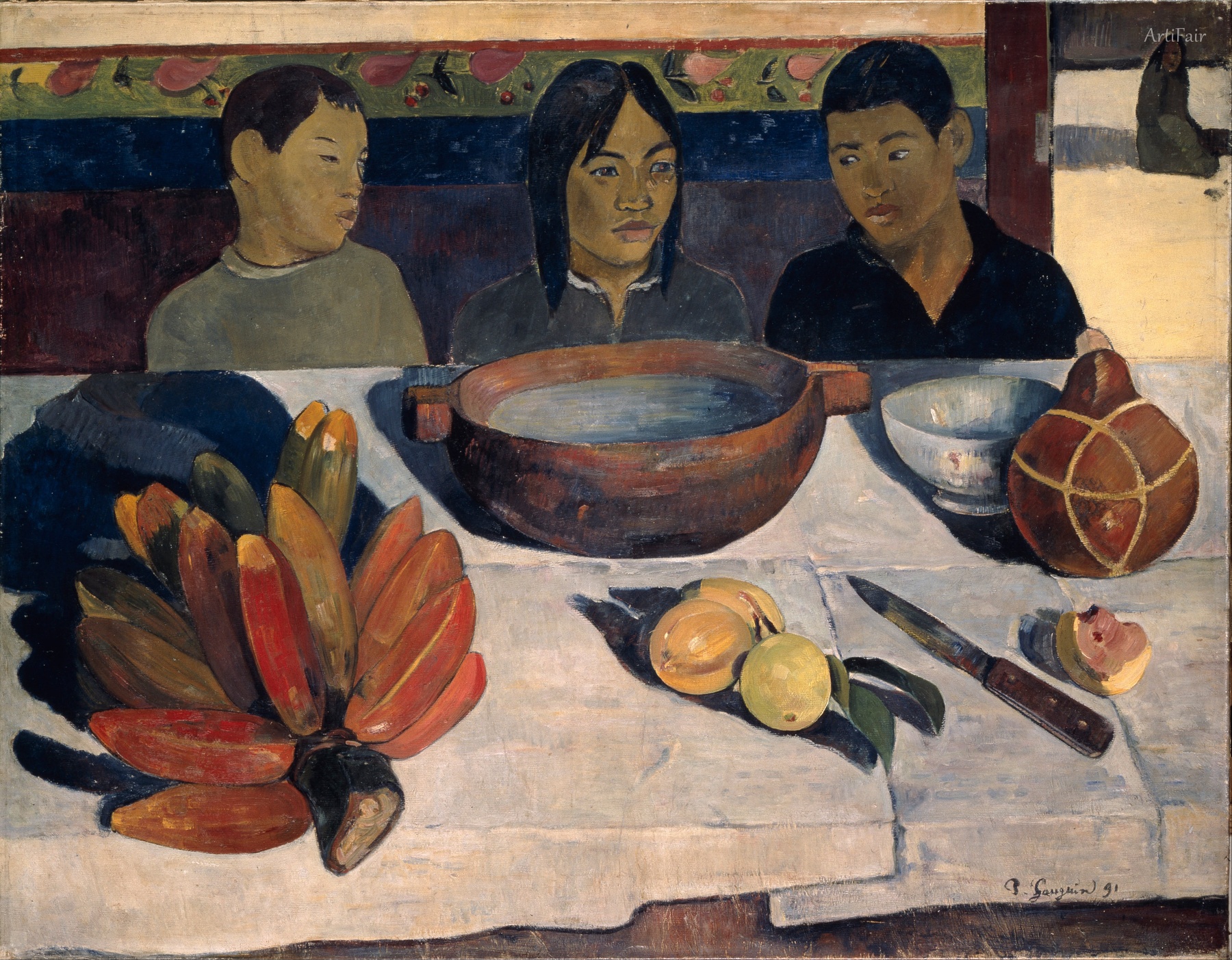
Art Appreciation
The painting conveys an intimate scene of three figures gathered closely around a table laden with a variety of objects that balance between still life and portraiture. At the forefront, a bunch of vibrant bananas dominates the left side of the table, their warm reds and yellows contrasting vividly with the more muted, earthy tones of the rest of the composition. A large earthenware pot takes center stage, flanked by smaller bowls and pieces of fruit, including a uniquely shaped melon and some citrus, all resting on a white tablecloth that invites the eye to explore its subtle folds and the interplay of shadow and light. Above the table, the three individuals—two males and one female—sit quietly, their expressions contemplative, their gaze not directly engaging the viewer but hinting at an unspoken narrative. The use of flat planes of color and simplified forms, characteristic of post-impressionist style, imbues the scene with both a decorative quality and emotional depth.
The artistic technique shows a bold use of color contrasts and planar simplification, lending the work a tactile yet graphic presence that captures the essence beyond mere representation. The composition delicately balances still life and human presence, evoking a moment frozen in time but alive with quiet tension and warmth. The deep, rich color palette — with earthy browns, lush reds, and subtle blues — invites a contemplative mood, perhaps reflecting the cultural and personal context surrounding the figures. This piece, created in 1891, reflects the artist’s fascination with exotic subjects and his transition toward more symbolic, expressive approaches in art, bridging Western painting traditions with a new, more experimental visual language. The emotional impact oscillates between familiarity and mystery, inviting the viewer to sense what lies beyond the surface of this humble yet profound meal.